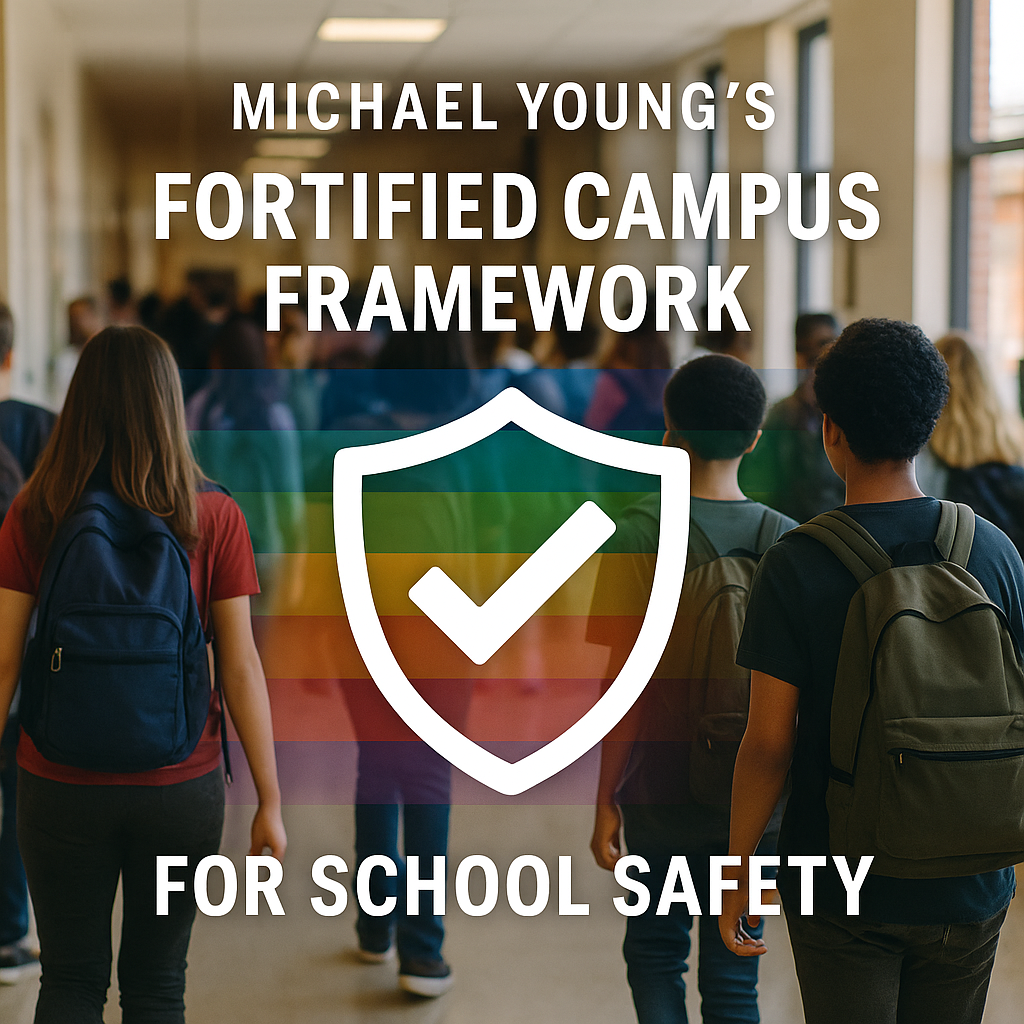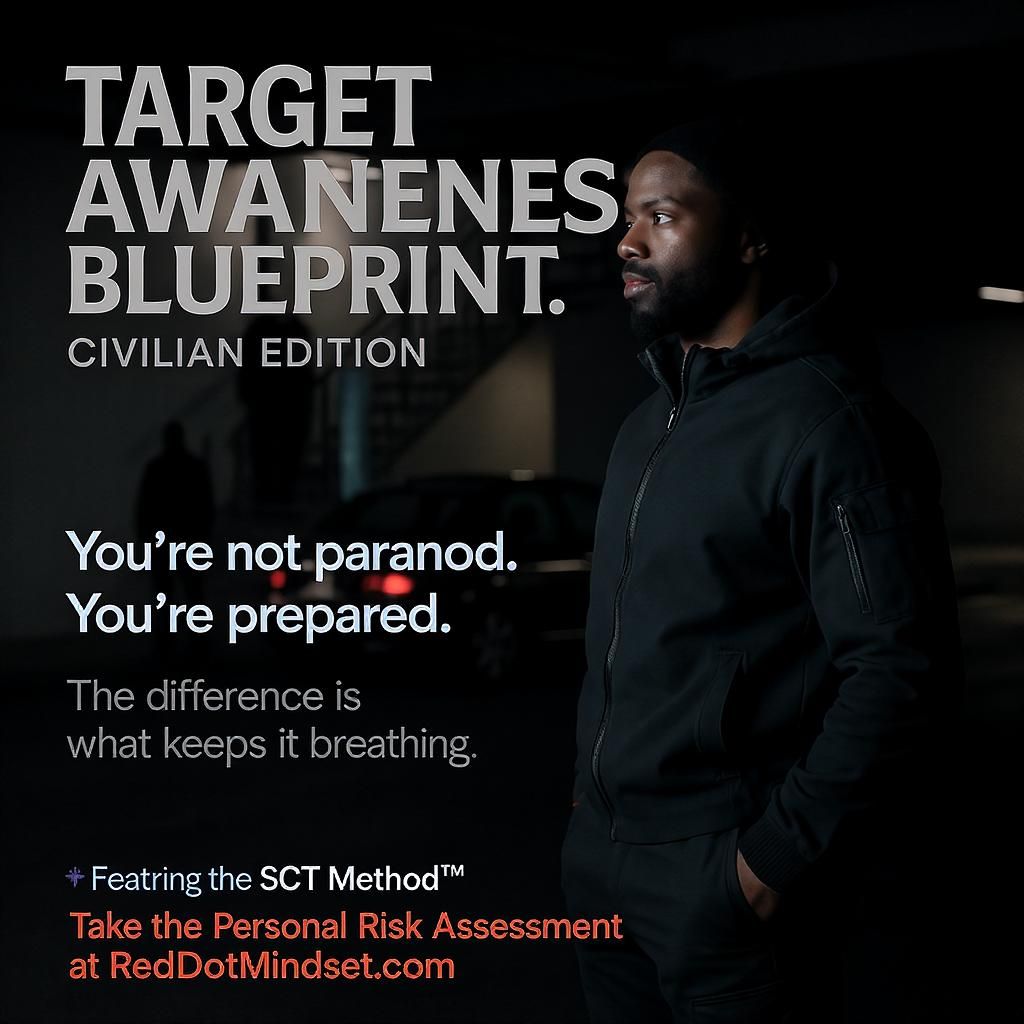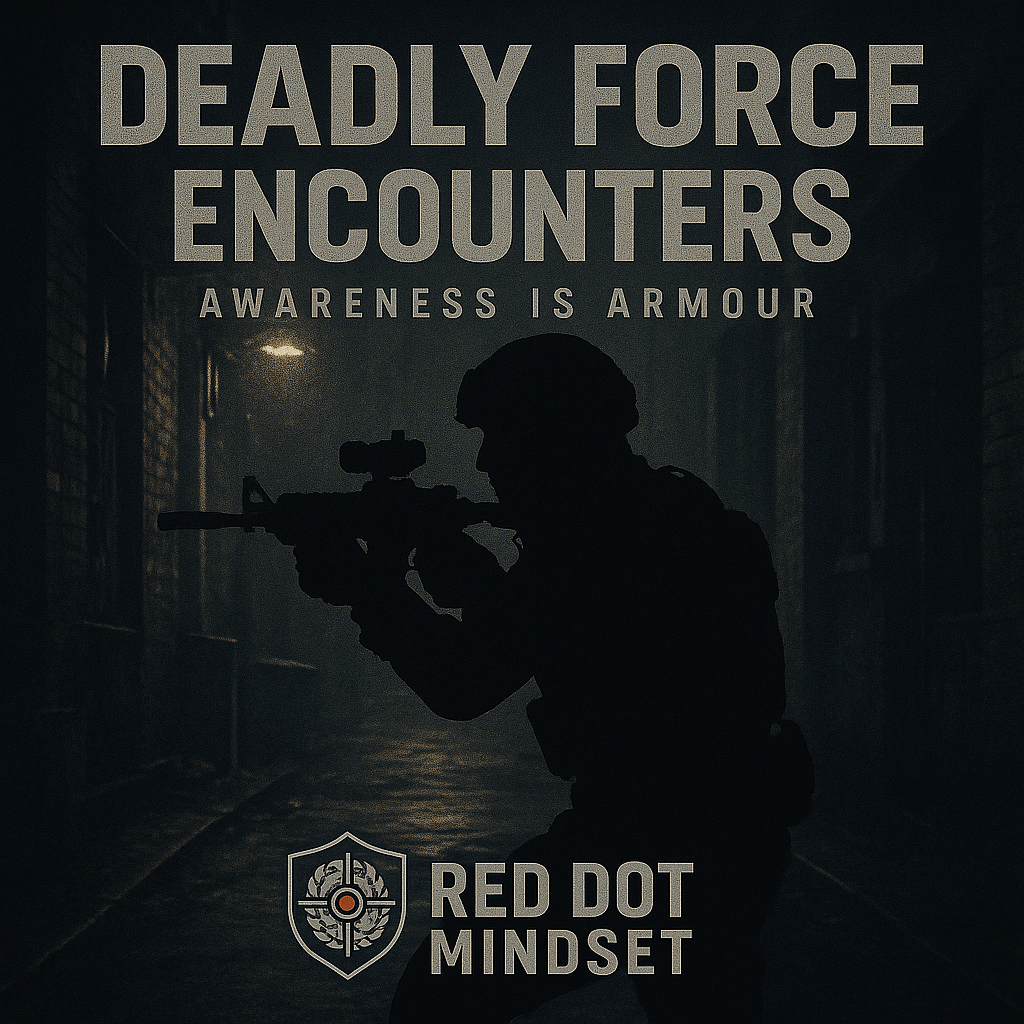[00:00:00] Speaker A: Welcome back to the Deep Dive. We sift through the sources, you get the key insights today, a really critical school safety. It touches every community and it's, well, it's often full of strong opinions, right. Debates about arming teachers versus maybe more complex systemic designs.
[00:00:15] Speaker B: Exactly. And what's interesting, I think, is seeing how the conversation is moving, shifting, maybe from just reacting to things, towards a more proactive kind of comprehensive strategy. We're going to explore a layered defense framework today. It's aimed not just at reacting to violence, but actively preventing it and controlling the environment if, you know, the worst should happen.
[00:00:38] Speaker A: Okay, let's unpack this. Our Deep Dive today is into a proposed framework for school security. It was originally developed for the Red Dot Mindset podcast by Mickey Middaugh of Gray Matter Ops and has been really significantly shaped by subject matter expert Michael Young. His background in school safety, threat mitigation, it's just central to this whole design. Our sources consistently point that out.
[00:00:59] Speaker B: Oh, absolutely. Michael Young's expertise, it's been pivotal in, well, shifting the whole paradigm, you could say, of school safety. You'll see how his framework really moves beyond that widely known run, hide, fight model. Instead, it proposes something more nuanced, more systematic. Isolate, Warner, Marshall, evacuate.
[00:01:18] Speaker A: And just a reminder, for more discussions like this, you can always check out red.mindset.com.
so the sources we looked at, they immediately framed the problem by calling schools soft targets. I mean, think about it. Lots of people designed to be open, welcoming security isn't always obvious. That accessibility, while it's crucial for education, well, it can create some real vulnerabilities.
[00:01:38] Speaker B: And that raises the big question, doesn't it? How do you secure these places without like turning them into fortresses? The old approach, run, hide, fight. I mean, it's vital for that immediate chaos response, sure, but it's fundamentally reactive. Michael Young's first framework, though, it really pushes us towards a clearly proactive stance.
[00:01:57] Speaker A: Right? And you see this tension in some of the common solutions that pop up, like those heavily marketed door barricade devices.
Our sources point out they often clash with fire codes, life safety rules, even ADA accessibility. You could end up trapping people. They become, you know, solutions, creating new problems.
[00:02:16] Speaker B: That's such a critical point. They're often quick fixes, really, and it just highlights the need for properly vetted compliance strategies. And costs. Cost is huge. Right? The materials we reviewed make that clear. Security can range from simple low cost signs all the way up to those incredibly expensive GIMA spec safe rooms, the ones designed for near absolute protection.
And Retrofitting old buildings, always way more complex, way more expensive than just designing security into new construction from the start.
[00:02:43] Speaker A: Which brings us back to a core idea from our sources. Policy and procedure are the foundation technology. No matter how advanced, it's just a tool.
[00:02:52] Speaker B: Exactly. It's the human systems, the training, the drills, those carefully planned procedures like the annual review of a safe rooms O and M plant. That's what makes it all work day to day.
[00:03:02] Speaker A: Okay, let's dive into Michael Young's fortified campus framework. Now it organizes safety around five key pillars. This isn't just about adding gadgets. It's about creating a truly layered defense system designed to actively prevent violence and control the environment if something does happen.
[00:03:20] Speaker B: And this comprehensive systemic design, it directly tackles the fear that crime generates. One of our sources puts it really well, Crime is a social problem that generates considerable fear. So a layered approach. It aims to reduce that fear by building real tangible protection.
[00:03:35] Speaker A: Okay, pillar one, perimeter control. What does that look like on a school campus?
[00:03:39] Speaker B: This one leans heavily on CPT principles. Crime prevention through environmental design.
CPTA is all about how the physical environment itself can cut down crime. Protecting, boost safety. Our sources, like the CDC's CPT School Assessment, the CPT Guidebook, they detail three core ideas here. First, natural surveillance. Designing spaces to get rid of hiding spots. Maximize visibility, make potential threats feel like they're being watched. Then there's access management, using smart barriers, features to guide people vehicles along controlled paths. And finally, territoriality. That's where physical features express ownership pride. It subtly signals that, you know, bad behavior won't fly. Here it's about creating that sense of eyes on before anything happens.
[00:04:21] Speaker A: So practical examples maybe. Well lit, easy to monitor entries, clear signs for traffic, securing those side doors during school hours. Things the CDC assessment mentions, like making sure parking lots paths are well lit. No blind spots from landscaping or fences.
[00:04:34] Speaker B: It's exactly right. And the ssat, the school safety assessment tool, another guideline we reference. It notes that simple vehicle barriers can be pretty low cost. Neutral impact on the school climate. Signage too low cost effective.
But it's worth noting. Extensive CCTV around the perimeter that can get expensive and importantly might negatively impact that welcoming feel because of privacy concerns. Same with staff or police at entry points. Effective, yes, but costly. And their impact on climate really depends on how they interact with people. Got it. Okay, next pillar two, zone segmentation. How does Michael Young's framework suggest breaking down the campus?
The Pan assist guidelines, its protection of assets in schools and spaces, a key standard. They lay this out really well through Layers. You've got a campus exterior perimeter, the building perimeter, and then the classroom or interior layers. It's not just about lines on a map though. It's about creating distinct zones, each with different access controls, different security measures. Like the CDC's CPT assessment points out how even subtle physical cues can define space. Reinforce that territoriality idea and the sources.
[00:05:41] Speaker A: Get really specific here. The SSAT talks about interior barriers, maybe hallway partitions that lock, making it harder for an intruder to just move freely.
[00:05:51] Speaker B: Right.
[00:05:51] Speaker A: What's really interesting in the past guidelines is the discussion on corridor geometry. Straight corridors mean clear sight lines, faster evacuation maybe, but also a clearer shot for an assailant. Whereas curved or segmented corridors, they reduce an assailant's line of sight, offer natural cover, but might block views for security or slow people down evacuating. It's about understanding those trade offs in your specific building.
[00:06:16] Speaker B: Exactly. Making conscious choices based on the environment.
[00:06:19] Speaker A: Okay. Moving inward, pillar three, the hardened core, often called the keep. This sounds like a serious safe zone.
[00:06:26] Speaker B: It absolutely is. This pillar is all about creating incredibly secure areas inside the school designed for near absolute protection.
[00:06:35] Speaker A: Mm.
[00:06:36] Speaker B: Sources like FEMA, P361. That's federal guidance on safe rooms for things like tornadoes, hurricanes. Explain. These can even be multi use. Imagine your cafeteria or gym doubling as a super secure safe room. That gives you a return on investment. Plus people are familiar with the space.
[00:06:52] Speaker A: Before an emergency, so not just for storms. The principles apply directly to active threats.
[00:06:57] Speaker B: Absolutely. The core ideas of hardening, designing spaces to withstand major impacts using systems that are tested, listed, labeled, they translate directly. The SSA talks about this too. Bullet resistant doors, windows inside security fill on glass, reinforcing walls, even portable ballistic partitions you could deploy quickly.
[00:07:14] Speaker A: Which is totally different from those iffy barricade devices we mentioned earlier. The ones violating fire codes. This is proper engineered hardening that meets safety standards.
[00:07:23] Speaker B: Precisely. The parents guidelines are explicit. Classroom and shelter in place. Doors must be lockable from inside by everyone. Single motion to get out.
They even recommend specific security glazing levels like ASTM F3561 or maybe level 13 or 5, depending on the area. For interior doors, classrooms, real protection.
[00:07:42] Speaker A: Okay. Pillar four, responder integration. How does this framework bring emergency services into the picture?
[00:07:49] Speaker B: This is vital. Sources like the NASTRO best practices. That's the national association of School Resource Officers detail the role of SROs. These are carefully picked trained law enforcement officers actually embedded in the schools. And their training often includes cpt.
A formal agreement between law enforcement and the district is key. It defines roles. Clearly it ensures SROs act as law enforcement, safety educators, informal counselors explicitly, not as school disciplinarians. Nastro actually recommends they have at least three years on the force first.
[00:08:20] Speaker A: So it's more than just having an officer there. It's about defining their integrated kind of multifaceted role in the school community.
[00:08:26] Speaker B: Exactly. And the SSAT points to low cost integrations like just giving master keys or building plans to local police for faster access. More advanced stuff includes giving responders real time CCTV feeds using a zone emergency response system like the past guidelines describe. That system uses designated zones to guide responders right to the incident location. Maybe even integrating with campus maps, satellite photos, unbelievable situational awareness.
[00:08:53] Speaker A: And this is where tech really comes in, right? Our sources mention things like the RAVE mobile safety panic button integrating with command Aware instantly triggers an alert, gives GPS coordinates, lets agencies tap into nearby camera feeds live.
[00:09:06] Speaker B: Yes, that real time info is just invaluable for a fast, smart response. And while responders are on their way, sources like Alert the active shooter training program remind his professional medical help might be delayed. Which underscores how critical basic medical readiness inside the school is. Things like stop the bleed training for staff, for survivors. Multiple sources highlight this as a way to save lives before paramedics can even get there.
[00:09:29] Speaker A: Right. Okay, finally, Pillar 5, Unified Command, sometimes called FSCC. This sounds like the nerve center for the whole operation.
[00:09:37] Speaker B: It really is. The overarching strategy the Panzas guidelines keep emphasizing. Comprehensive security plans, solid policies. They're the absolute foundation. Without good policies, good procedures, even the best tech won't work. Right. So this pillar envisions unified security and life safety systems, often managed by a security operations center, a SOC that's a central team. Security and IT pros. Monitoring, detecting, responding to incidents across a whole district. A coordinated approach.
[00:10:07] Speaker A: So this pulls in everything from cybersecurity rules to district wide mass communication systems.
[00:10:12] Speaker B: Exactly. Our sources talk about district wide communication using NOAA feeds for real time weather monitoring. And the crucial importance of bystander reporting. The CCI US K12 Bystander Reporting Toolkit, for example, stress is offering multiple ways to report. Anonymous, confidential, responding fast and training the community on what and how to report. You have to build awareness and crucially, trust.
[00:10:32] Speaker A: That raises a key question, doesn't it? How do you build that trust so people actually report things? Even subtle concerns?
[00:10:39] Speaker B: Yeah, that's where proactive behavioral intervention becomes so important. Our sources highlight the role of behavioral threat assessment teams. The U.S. secret Service, the Pennsylvania Commission on Crime and Delinquency they detail this. These are multidisciplinary teams focusing on concerning behaviors, not on profiling people. They're designed to intervene early. And what's really striking, the Secret service found most school attackers showed prior concerning behavior, often even communicated their intent beforehand. These teams aren't about criminal investigation or discipline. They're about providing support, intervention, preventing violence before it happens.
[00:11:14] Speaker A: And what about communication inside the school for teachers, staff?
[00:11:19] Speaker B: The PASSAS guidelines get into detail there too. Robust comms systems with emergency overrides, distinct alert tones. They strongly recommend local two way radios for all staff, teachers included. You might need signal boosters B to asset systems to make sure you have reliable radio coverage everywhere inside buildings, no dead zones. And all these systems should tie into a district wide mass notification system for seamless communication during any kind of incident.
[00:11:47] Speaker A: So what does all this mean for the day to day operations, the ongoing policies in a school district?
[00:11:52] Speaker B: It means you need really robust policies. Things like data privacy plans that follow ferpa, the Family Educational Rights and Privacy act, comprehensive supply chain risk management, detailed incident response plans. Sources also emphasize personnel policies requiring ID badges, strict visitor management systems with access agreements and regular mandatory training. Cybersecurity, phishing simulations or plus full scale incident response drills. It's about constant readiness, constant adaptation.
[00:12:19] Speaker A: We've touched on some tech, but let's dive a bit deeper into what makes Michael Young's framework really achievable now.
What are some of the sort of cutting edge technologies enabling this kind of layered defense?
[00:12:30] Speaker B: Yeah, the fortified canvas framework definitely leverages some big advancements. Take video analytics. With AI detection, it can provide real time alerts for specific weird actions or movements inside or outside our sources. Including past mention facial recognition capabilities too. Yeah, not just for alerting about known threats, but maybe locating missing kids or identifying people banned from campus.
[00:12:54] Speaker A: That's pretty advanced. And here's something really forward looking. Drones our sources mention Born ISD exploring drones for that bird's eye view, Real time updates for first responders and Highland Park ISD seeing them as supporting officers, not replacing them like critical eyes in the sky.
[00:13:10] Speaker B: Yes, that immediate situational awareness from a drone, it can be absolutely invaluable for responders.
Beyond that, sophisticated video surveillance has really evolved. It used to be just forensic recording. What happened now? Especially with IP cameras everywhere, it's becoming proactive. Fixed cameras for the perimeter, entry points, detailed coverage for pickup drop off zones to ID people, vehicles.
[00:13:34] Speaker A: And unifying all these systems is crucial. Right. PASS really emphasizes standardizing video recording systems across a district.
Makes training simpler. Emergency response. Way more effective.
[00:13:44] Speaker B: Precisely. Another key piece is panic alarm systems. Pass describes these. They can be small buttons installed discreetly, maybe even wearable devices. They often have wireless capability, so a teacher could instantly alert admin, the district, maybe even first responders. Directly and critically, these systems can tie into the broader communication network, automating emergency messages the second a button is pushed.
[00:14:06] Speaker A: So one button push and the whole system springs into action. Alerts, maybe lockdowns.
[00:14:10] Speaker B: That's the goal. Yeah, instant coordinated response. Plus, Michael Young's framework integrates advanced detection tech for weapons and prohibited items. Our sources referencing the 2021 Secret Service analysis consistently show firearms were the weapon of choice in averted attacks. It really highlights the role modern detection tech can play, but its effectiveness hinges heavily on clear policies and really good staff training on how to respond.
[00:14:38] Speaker A: And the sources also mention the more traditional tools like X ray machines, metal detectors. Often costly, though. And they note that these can create bottlenecks at entrances, which ironically could become a new vulnerability if not managed carefully.
[00:14:51] Speaker B: A definite trade off to consider.
[00:14:53] Speaker A: Okay, this all sounds incredibly thorough, but actually building this out, implementing it, that can't be simple. What are the practical hurdles schools face putting Michael Young's fortified campus framework into place?
[00:15:03] Speaker B: Oh, a huge one, as one of our initial sources really hammered home, is the difference between new construction and retrofitting. Trying to bring older school buildings up to these standards, it's always way more complex, way more expensive than just designing security in from the ground up on a new build.
[00:15:18] Speaker A: Wow. Yeah, I can only imagine the headaches and the budget implications there. And what about integrating all these, you know, complex systems and procedures?
[00:15:27] Speaker B: Our sources just keep coming back to this. Without the right policies, the right procedures, even the most amazing technology just, well, it falls apart. This idea of the human systems, the training, the drills, the clear operational plans, being the foundation that makes the tech actually work effectively. It's a really profound takeaway. The SSAT even points out that implementing new policies and training is often lower cost, but still highly effective compared to just adding more staff or building new things.
[00:15:55] Speaker A: So what does this mean for that really crucial element, school climate? I mean, some of these measures, like cameras everywhere, they might feel intrusive to students, staff.
[00:16:03] Speaker B: That raises such an important question, how do you find that balance secure but still welcoming and nurturing? The SSAT specifically tries to assess the likely impact of different measures on school climate. Some things, like maybe vehicle barriers, are seen as pretty neutral, but widespread CCTV that can have a negative effect, make students feel watched, distrusted, on the flip side. Better lighting can be really positive, makes things look nicer, feel safer, and how security personnel are perceived, that varies wildly too. They could enhance the welcoming feel or if handled poorly, seem punitive.
[00:16:37] Speaker A: And one last thing, multi hazard considerations.
If you design a safe room for a tornado, does it automatically work perfectly for an active threat? Or do the needs sometimes conflict?
[00:16:47] Speaker B: That's a fascinating point. It really shows the complexity here. Our FEMA P361 source specifically mentions this design. Requirements for different hazards can sometimes clash. For example, you want a rigid structure for high winds. The flexibility might be better for earthquakes. Or those massive reinforced concrete roofs that resist wind. Their sheer weight could be bad in an earthquake design.
So a truly comprehensive plan has to look at these potential conflicts carefully and find integrated solutions, harmonious solutions that offer the best protection across different kinds of threats.
[00:17:19] Speaker A: Wow, what an incredible Deep dive. We've really unpacked Michael Young's fortified campus framework, moving us beyond just reacting with run, hide, fight to a much more proactive layered defense built on isolate, warn, our marshal, evacuate.
[00:17:31] Speaker B: Yeah, we've explored all those crucial elements. Perimeter control, zone segmentation, the hardened core or keep responder integration, unified command. All supported by technology. Yes, but fundamentally grounded in robust policies and procedures. It's a systemic approach. It acknowledges what our sources said. Crime is a social problem that generates considerable fear, and comprehensive design is needed to address that fear effectively.
[00:17:56] Speaker A: This layered defense, it isn't just about reacting after something terrible happens. It's about actively trying to prevent violence, strategically managing the environment if an incident does occur, all while trying to balance that security with the vital goal of creating welcoming, positive school environments.
[00:18:14] Speaker B: Absolutely. And connecting this to the bigger picture, it really leaves you with a question, doesn't it, for you, our listener? As threats keep evolving and our understanding of what works best improves, how do we continuously adapt these safeguards in our schools? How do we protect our children effectively while also making sure these places foster learning, growth, a real sense of community, rather than just being places dominated by fear?
[00:18:36] Speaker A: Something important to think about. For more insights on topics like this and to explore the full Gray Matter Ops training library, please Visit
[email protected] Thank you for joining us on the Deep Dive.




